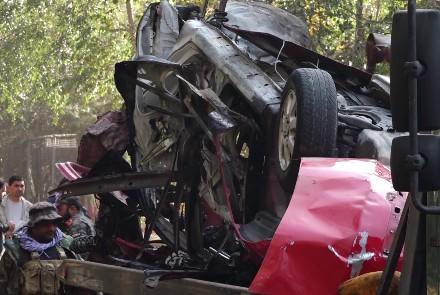The Afghan government’s investigation into the systematic murders of the Afghan journalists and civil society activists has created some confusion among the people.
A month ago, officials from Afghanistan’s intelligence agency—the National Directorate of Security (NDS) announced that the NDS forces had arrested a number of suspects allegedly involved in the killing of Afghan journalists, including the assassination of former TOLOnews’ present Yama Siawash, however, the Afghan security agencies have not disclosed the identity of the attackers and the perpetrators who planned the attacks.
Meanwhile, journalists and civil society activists in Kunduz have said that a rise in threats against the media community has impacted the quality of reporting across the country.
Fariba Farmand is an Afghan female journalist in Kunduz who believes that today the rise in attacks against the Afghan media community has increased significantly. Farahmand started her career as a journalist two years ago.
“We are very concerned, we are very fearful and fear threats while coming to the office, but we continue our work,” said Fariba Farahmand, a journalist of Radio Kunduz.
“Threats have increased against the media outlets, our female colleagues are no longer with us, our male colleagues attend the work with major fears,” said Hedayatullah Ziarmal, the director of Oranus TV in Kunduz.
“Some of my colleagues are working from home, unfortunately, two radios in Kunduz have halted their activities due to security threats and financial issues,” said Zabiullah Mojadadei, a media activist in Kunduz.
Along with journalists, civil society members have also been targeted. In the latest incident, Safiullah Amiri, deputy head of the Kunduz provincial council, died from injuries sustained in an IED blast on Tuesday.
The incident happened in Kunduz city as Safiullah Amiri had left his home for the office, said Ayoubi.
“There is a need for more practical security strategies to be implemented in Kunduz--civil society members, elders and elites are gravely concerned about the issue in Kunduz,” said Mohammad Yousuf Ayoubi, the head of the Kunduz provincial council.
“This situation is a matter of grave concern for the entire people of Afghanistan, particularly for the civil society and the journalists. I hope that the security and intelligence agencies take swift action,” said Sayed Hassan Paktiawal, a member of parliament.
Over the past 75 days, at least 10 civil society activists and six journalists have been killed in Afghanistan.
In 2016, the Taliban targeted a vehicle of Moby Group, which owns TOLO TV and TOLOnews, and killed seven of its employees.
Those media workers who lost their lives in 2020:
Safar Mohammad Atal, an anchor of Samson Radio in Helmand
Ahmad Khan Nawid, an anchor of Ghor Radio in Feroz Koh city
Mir Wahid Shah Amiri, Khorshid TV reporter in Kabul
Shafiq Zabih, a cameraman at Khorshid TV
Elyas Daee, a Radio Azadi reporter in Helmand
Malala Maiwand, Eekas TV anchor in Nangarhar
Rahmatullah Nekzad, a freelance reporter in Ghazni
Tahir Khan, a driver at Enekas TV in Nangarhar
On the first day of 2021, a reporter, Bismillah Adil Aimaq, was killed in an attack by unknown armed men in Ghor. He was head of a local radio station in the province.


